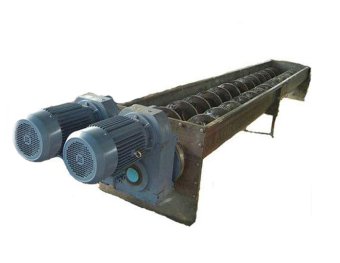Understanding Low Shear Centrifugal Pumps
Centrifugal pumps are widely utilized in various industries for their efficiency and reliable fluid handling capabilities. Among them, low shear centrifugal pumps occupy a critical space, particularly in applications where the integrity of the fluid is paramount. These pumps are specifically designed to minimize shear forces during the pumping process, making them ideal for handling sensitive fluids such as polymers, emulsions, and biological materials.
The Working Principle
At the core of a low shear centrifugal pump lies the basic principle of fluid dynamics. It operates by using a rotating impeller to impart kinetic energy to the fluid, transforming that energy into pressure as it moves through the pump. However, what distinguishes low shear centrifugal pumps from their standard counterparts is their design features that minimize turbulence and shear stress.
These pumps often utilize larger impeller diameters and slower rotational speeds to achieve reduced shear forces. The flow passages within the pump are designed to facilitate smooth transitions and minimize abrupt changes in direction that typically cause turbulence. Additionally, the materials used to construct these pumps may include special composites and coatings designed to reduce friction and enhance fluid integrity.
Applications
Low shear centrifugal pumps find their primary applications in industries such as food and beverage, pharmaceuticals, and wastewater treatment. In the food industry, for example, they are employed for transferring delicate products like dairy, juices, and sauces without damaging the texture or altering the properties of the product. In pharmaceuticals, maintaining the integrity of active ingredients during processing is vital, making low shear pumps indispensable.
Furthermore, these pumps are also critical in biopharmaceutical manufacturing, where they handle sensitive cultures and mediums. Any alteration or damage to these materials can result in significant losses and compromised product quality. By minimizing shear, low shear centrifugal pumps ensure that the biochemical properties of these materials are preserved.
low shear centrifugal pump
Advantages
The key advantages of low shear centrifugal pumps include their capability to handle a wide range of viscosities, from low-viscosity liquids to thicker, more viscous products, without compromising product quality. Additionally, the gentle pumping action reduces the potential for foaming, cavitation, and other undesired effects that can arise from high-shear operations.
Another major advantage is their ease of maintenance. Many designs allow for straightforward disassembly and cleaning, which is particularly important in industries where hygiene standards are strict. This reduces downtime and enhances productivity as operators can quickly service the equipment when needed.
Challenges and Considerations
Despite their numerous advantages, low shear centrifugal pumps are not without challenges. They may require more space due to their larger impellers and slower speeds, which can be a consideration in facilities where space is limited. Furthermore, they may not be the best choice for all applications, particularly where high pressures and flow rates are needed.
It is essential for operators and engineers to carefully evaluate their specific requirements and conduct thorough assessments when selecting a pump. Understanding the nature of the fluid being pumped, the desired flow rate, and the system requirements are crucial steps in ensuring the right pump is chosen for the application.
Conclusion
Low shear centrifugal pumps play a vital role in industries that prioritize the integrity of sensitive fluids. By minimizing shear forces and turbulence, these pumps offer reliable performance and maintain product quality throughout the pumping process. As industries continue to evolve, the demand for such specialized equipment will likely increase, cementing the importance of low shear centrifugal pumps in modern fluid handling applications.
 Linear Motion Shale Shaker In Drilling Rig
Linear Motion Shale Shaker In Drilling Rig  Oilfield Mud Cleaner
Oilfield Mud Cleaner  Drilling Fluid Decanter Centrifuge
Drilling Fluid Decanter Centrifuge  Drilling Mud Desander
Drilling Mud Desander  Hydrocyclone Desilter
Hydrocyclone Desilter  Centrifugal Pump/Centrifugal Mud Pump
Centrifugal Pump/Centrifugal Mud Pump  Shear Pump
Shear Pump  Jet Mud Mixer
Jet Mud Mixer  Horizontal Mud Agitator
Horizontal Mud Agitator  Constant Pressure Drilling Fluid Mud Gas Separator
Constant Pressure Drilling Fluid Mud Gas Separator  Mud Gun
Mud Gun  Mud Tank
Mud Tank  Solids Control System Vacuum Degasser
Solids Control System Vacuum Degasser  Flare Ignition Device
Flare Ignition Device  Diesel Tank
Diesel Tank  Submersible Slurry Pump
Submersible Slurry Pump 






































